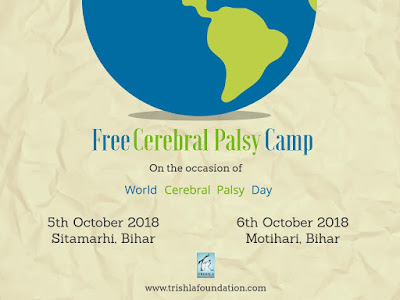The image most people get when they hear about a stroke is that of an adult, usually older, with the resulting paralysis and cognitive issues. But strokes can also happen to children, infants and even the unborn fetus. In the United States, stroke ranks number 15 as the cause of death in children ages 0-14. Pediatric stroke also increases the risk that a child may develop cerebral palsy. If a child has suffered a stroke, with early detection and treatment, the chances for further damage and recurrence can be minimized.
In short, a stroke is the sudden death of brain cells in a localized area due to inadequate blood flow. There are two common types of strokes: hemorrhagic and ischemic. A hemorrhagic stroke is the bursting of a blood vessel within the brain. An ischemic stroke is the result of an obstruction or clot within an artery that inhibits proper blood flow to the brain. Children are equally susceptible to each type.
Heart conditions and blood disorders are known risk factors that can contribute to the increased susceptibility for stroke. For instance, children with sickle cell disease (SCD) are most at risk for ischemic stroke, usually occurring around the age 5. Children suffering from hemophilia or AVM (Arteriovenous Malformation) are more at risk for a hemorrhagic stroke. The greatest risk for pediatric stroke comes in the first year of child's life.
Children, especially those under the age of 3, most likely lack the communication skills required to let you know they need help. Therefore when it comes to infants, parents and other care givers must be especially vigilant to warning signs such as a seizure, as it could indicate a stroke. If a child is of the age where he or she is walking and or talking, the development of a slur, noticeable imbalance or blurred visions could be symptomatic of a stroke.
If a child has been diagnosed as having had a stroke, as with anything, the sooner treatment and therapy begins, the more favorable the results. There are medications that prevent blood clotting in children and surgeries aimed at reducing abnormal blood pressure within the brain. Dealing with stroke in a child is different than with an adult. Consult a pediatric neurosurgeon for the best course of action.
Hemiplegia (paralysis to one side of the body) and hemiparesis (a less severe weakened state to one side of the body) are common results of stroke to persons of all ages. In children, whose brain is still in development, stroke can result in the development of spastic hemiplegia cerebral palsy. Spastic hemiplegia cerebral palsy results in the full or partial paralysis to one side of the body. Hyperactivity, delayed walking, unexplained aggressiveness, epilepsy, seizures, speech impairments are among the challenges that these children could face.
As with other forms of
cerebral palsy, there are treatment options and physical therapies available to improve the child's issues of mobility and overall quality of life. Pediatric stroke can be a terrifying event in the life of a child and his family. While some may face long-term challenges, most go on to live rewarding and healthy lives.















